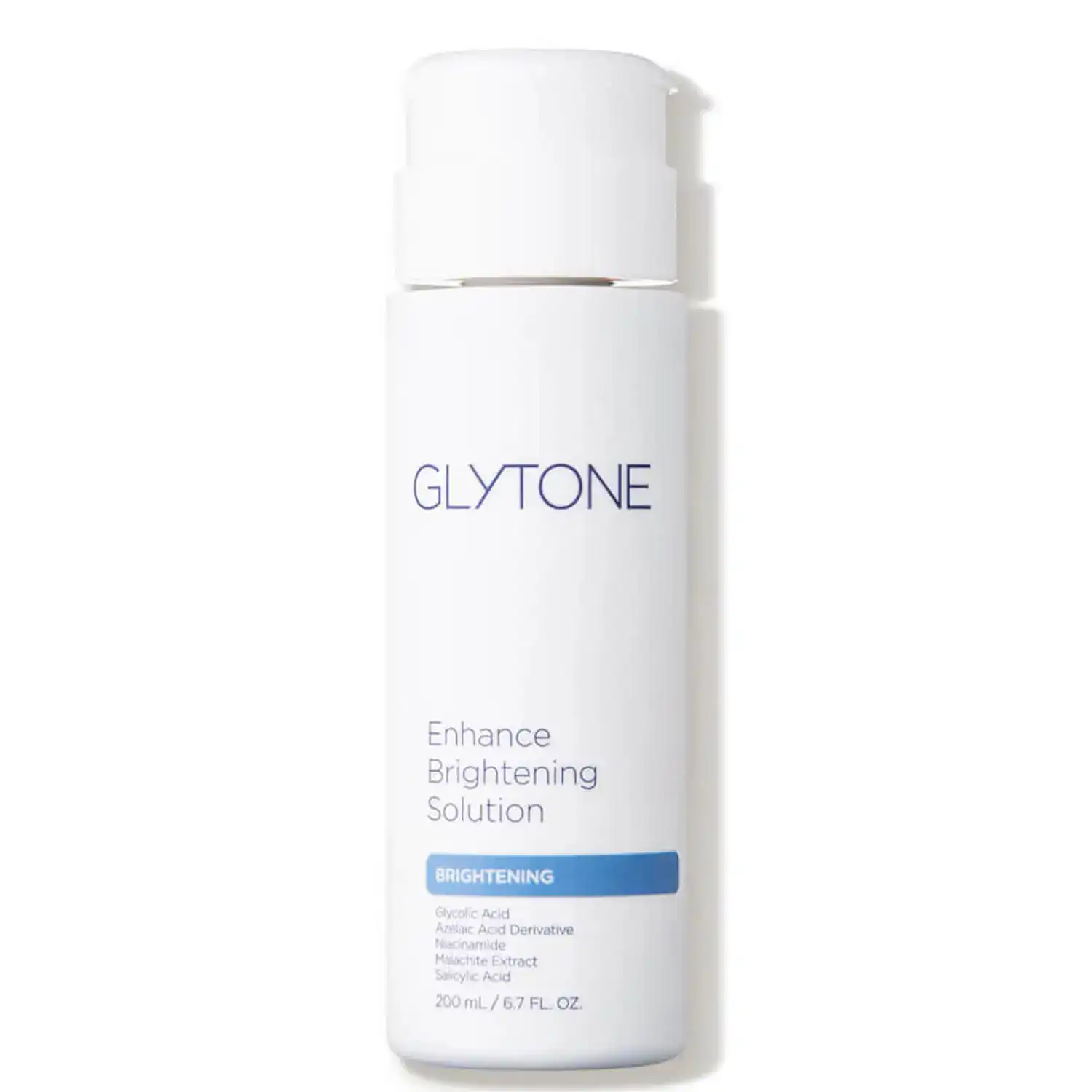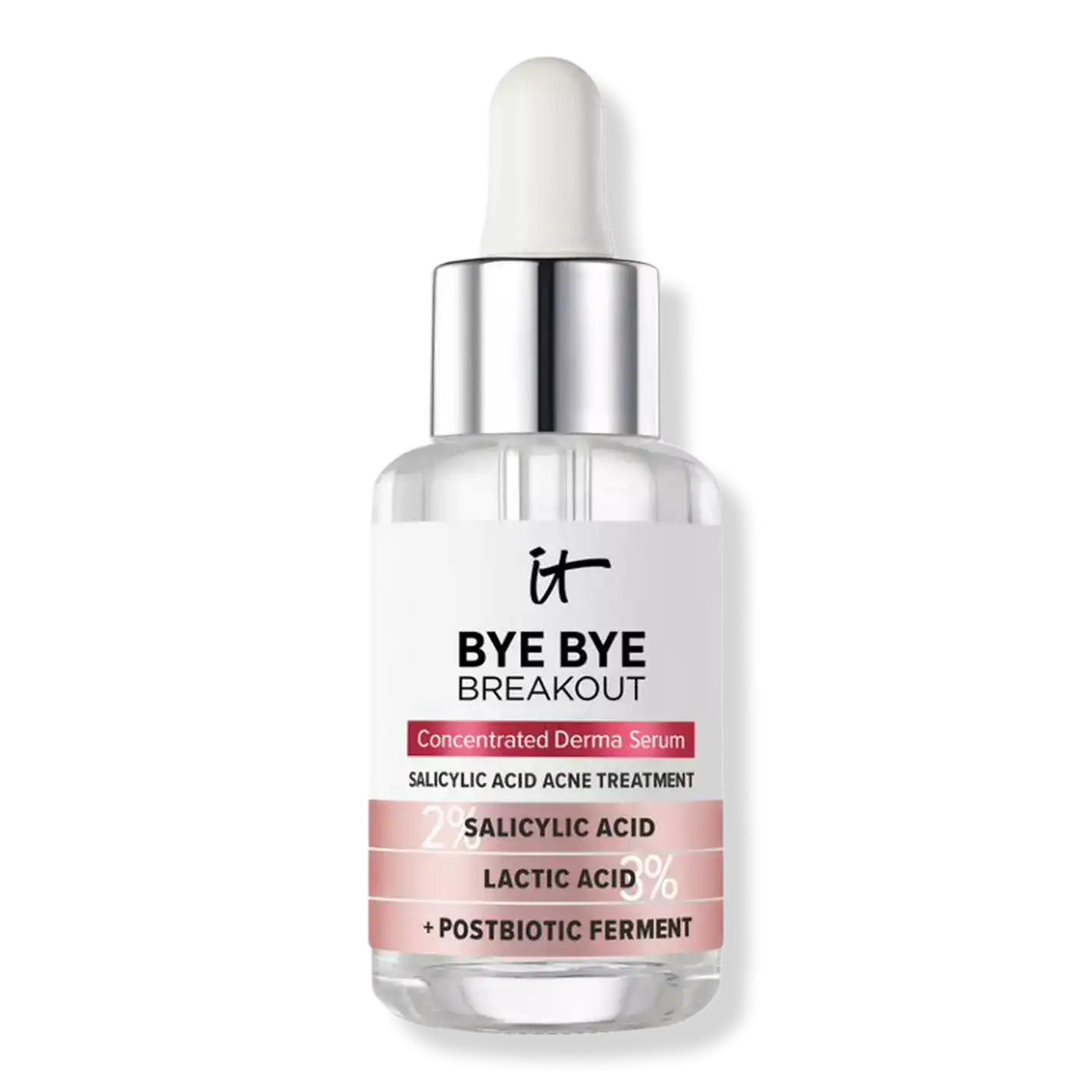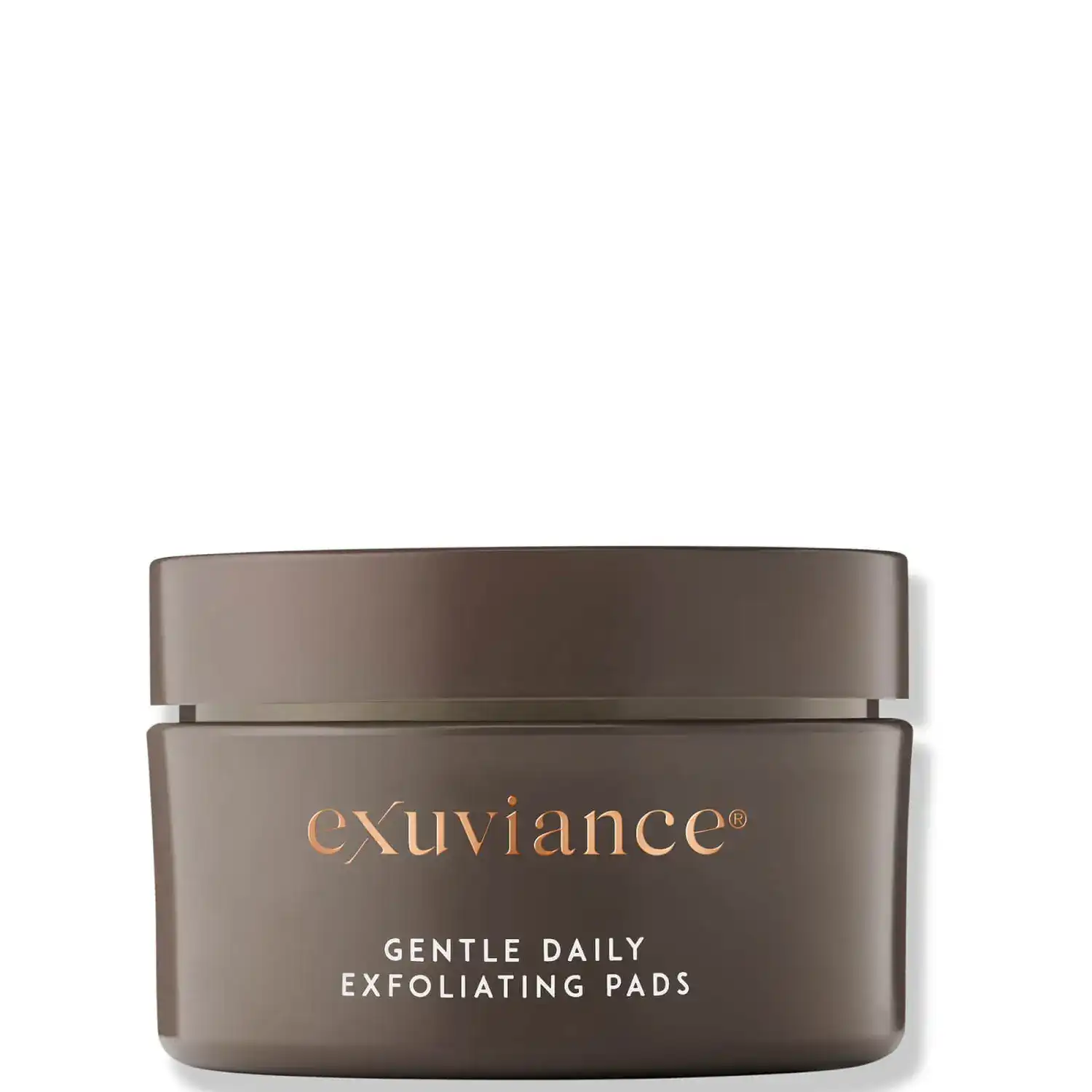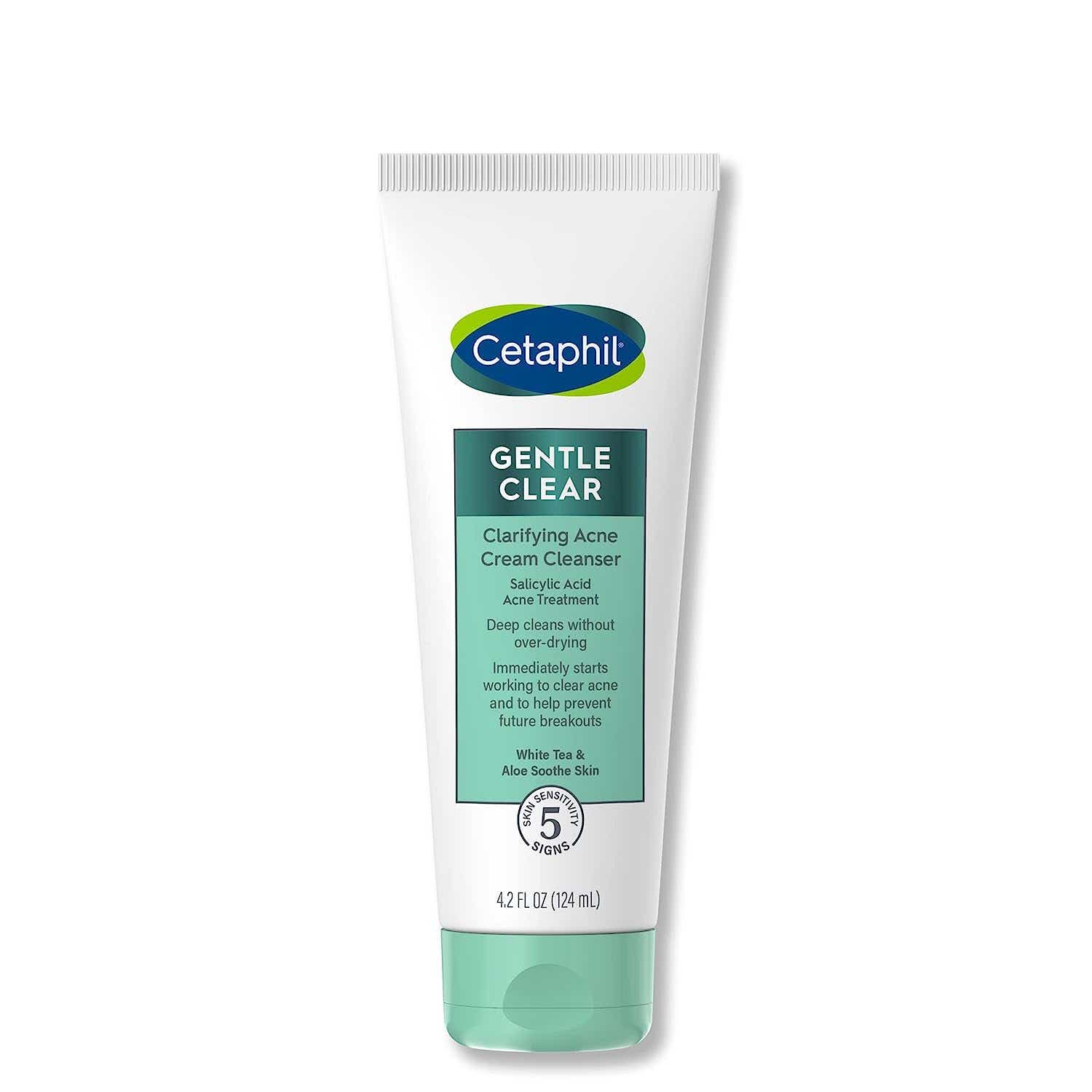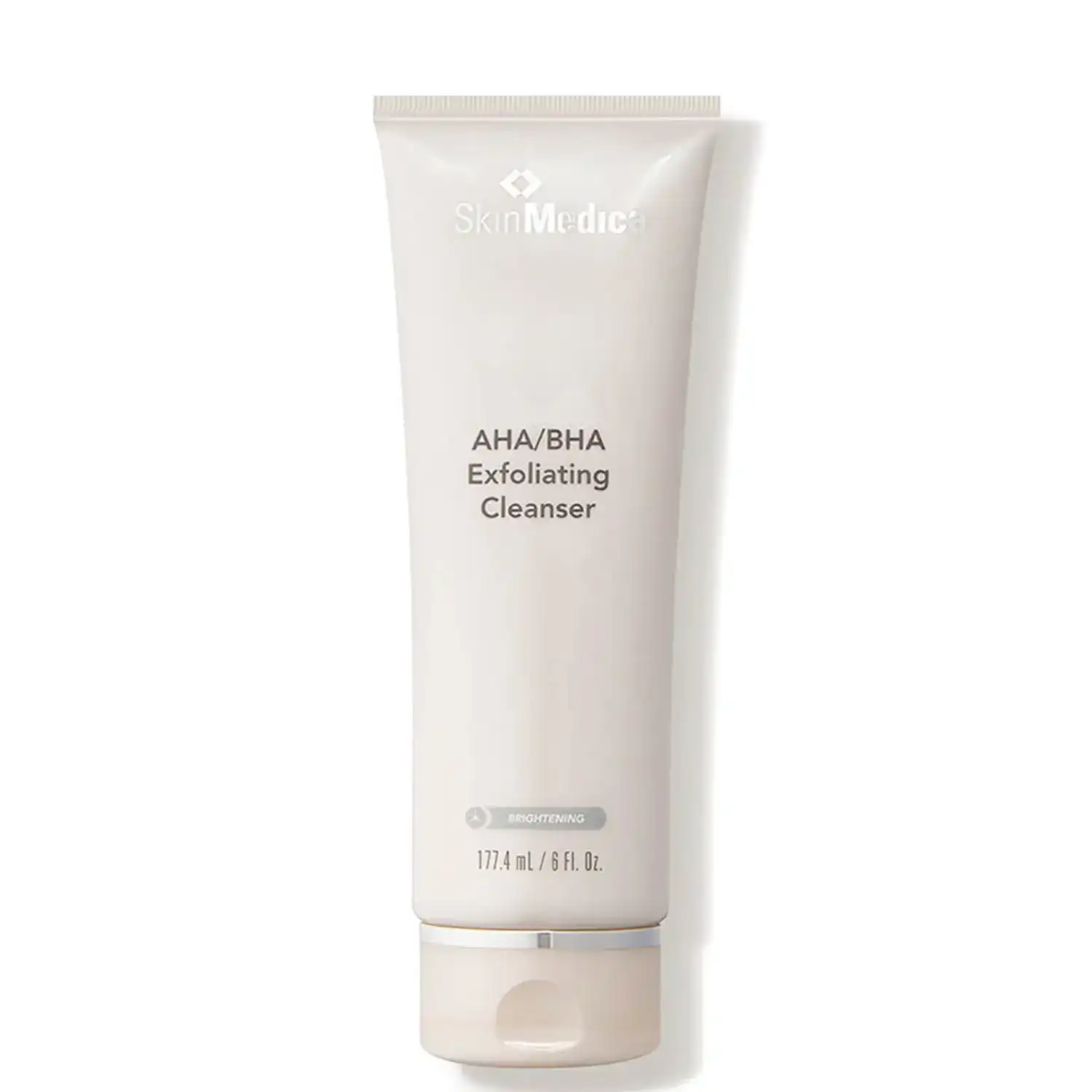Not too long ago, many of us were scrubbing our skins raw with harsh towels or, worse, the now infamous face wash of a certain stone fruit that skincare enthusiasts shudder at the thought of today. We don’t blame you for feeling compelled to combat uneven skin surfaces with such fervor, but in 2023, we’re kinder to our skin. Such aggressive techniques have fallen out of practice, and for a good reason. Abrasive skincare products with tiny specs of "exfoliants" — which we now know are microplastics — can tear the skin. But once we’ve laid those harmful skin exfoliators to rest, how do we get rid of the dead skin that's left behind?
Skincare companies now harness the power of gentler ingredients to concoct their exfoliants. But what does that even mean and what are exfoliators meant to do? We once measured their efficacy by the level of redness after a severe scrubbing session, but the right exfoliators can work wonders without irritating your skin.
To give our exfoliating regimen a healthy makeover, we spoke to Tiffany Jow Libby, MD, a board-certified dermatologist and Mohs surgeon at Brown University. Dr. Libby is demystifying exfoliation myths, explaining science-backed research in layman’s terms, and providing her favorite exfoliators for all skin types. Read on to get all your burning questions answered so that you never burn off your skin with an ambitious scrub again.
What is an exfoliator?
“An exfoliator works to get rid of dead skin cells that pile up on the skin’s surface,” Dr. Libby explains. The actual product can come in the form of face washes, toners, and more. What makes something exfoliating is the inclusion of a chemical ingredient that helps you shed dead skin.
If you’ve never exfoliated before but are sick of staring at a dull, dry surface, you might want to start. “[An exfoliator] helps speed up the skin cell turnover process, which helps improve skin texture, tone, and overall skin health, and reveals brighter, newer skin beneath,” Dr. Libby explains. How, when you’ve been piling on three products a day in the hopes of achieving a brighter glow, do exfoliators work so much magic? “When people exfoliate, they help shed the superficial dead skin cells, which in turn signals the bottom layer of the skin to jumpstart the regenerative process.”
Dr. Libby also notes that the body’s process of skin turnover slows down as we age, which can lead to even more buildup of dead skin. And if you don’t give it a little nudge, it might just sit there, leading to clogged pores and a dull finish. Think of it as letting a mantle accumulate dust. Every once in a while, you need to wipe it clean.
Shedding dead layers of skin will allow you to better absorb all those serums and creams you’ve spent loads of money on. “By removing the buildup of dead skin cells at the surface, exfoliation also helps prep the foundation for the next skincare steps and allows actives and other ingredients to work better because they have fewer layers of skin to penetrate.”
What's the difference between physical and chemical exfoliators?
“Physical exfoliation uses a manual agent like a scrub, brush, or procedure to remove the dead skin cells, whereas a chemical exfoliant is a topical solution that dissolves the bonds between the cells and lifts away the dead skin cells.” Using a physical exfoliant involves labor on your end (or from an esthetician), whether you’re rubbing a loofah on your body or scrubbing your face with a cleanser that contains tiny particles. That’s a physical exfoliant, and some states have banned them completely due to the inclusion of microplastics.
Meanwhile, chemical exfoliants work simply by sitting on your body, while a chemical reaction removes the skin for you (that’s why if you overdo it, you can feel your skin burning). The choice is yours but Dr. Libby notes that doctors tend to have a preference. “If you poll dermatologists, the majority will say they prefer chemical exfoliants because they’re effective without being abrasive to the skin like physical exfoliants tend to be.”
How do I pick a chemical exfoliator?
There are three different types of chemical exfoliants found on the market, alpha-hydroxy acids (AHAs), beta-hydroxy acids (BHAs), and polyhydroxy acids (PHAs), each with their own set of subcategories, which can lead to a brighter complexion and smoother and more even skin if used properly. They range from gentle to strong but remember: Stronger isn't always better. Here are a few tips to keep in mind:
- If you have sensitive skin, Dr. Libby suggests starting with polyhydroxy acids, which are gentle enough for daily use. From here, she says you can work your way up to a lactic acid product. Both of these are made up of large molecules, so they work more on the upper layers of the skin.
- The smaller the molecule, the deeper it will penetrate the skin, and salicylic acid molecules are smaller. “If you have oily or acne-prone skin, start with a beta-hydroxy acid like a salicylic acid, which is lipophilic, aka oil-loving, and gets deep into the pores to draw out excess oil, while also exfoliating skin and unclogging pores.”
- One of the strongest OTC chemical exfoliants is glycolic acid, which is even smaller. “For normal or combination skin, start with a glycolic acid,” Dr. Libby advises. This is the smallest of the AHA molecules. She warns that it’s highly effective, but it can cause irritation since it’s a more potent acid.
Most importantly, the type of exfoliator that’s right for you depends on your epidermal needs. With any skincare product, we always recommend testing it on a patch of skin on your wrist before committing to consistent usage on your face.
How often should you exfoliate?
This depends on the strength of your exfoliator and your skin type, according to Dr. Libby. “Ideally, I would recommend starting out once a week, and if you’re tolerating that well, increase use to two to three times per week.”
Her final piece of advice? Don’t overdo it. “What you don’t want is to over-exfoliate, which can cause more harm and irritate your skin barrier. If the skin is becoming red, dry, or irritated, dial back on the frequency of your exfoliation or stop it completely and repair your skin barrier with moisturizers before resuming,” she says. To avoid this, start slow. “When first introducing exfoliation to your skin, use it once weekly, and increase from there.”
5 Best Chemical Face Exfoliators, According to a Dermatologist
Glytone Enhance Brightening Solution
Dermstore
“I love recommending this exfoliating toner, which can be easily applied to the skin with a soft cotton round,” Dr. Libby says. “It contains glycolic and salicylic acids, which exfoliate away surface level dead skin cells to improve skin texture and tone, and azelaic acid and niacinamide to brighten skin and lighten dark spots.”
IT Cosmetics Bye Bye Breakout Salicylic Acid Acne Serum
“This serum is perfect for acne-prone skin to both prevent and treat breakouts. It has 2 percent salicylic acid, which unclogs pores and targets acne, while 3 percent lactic acid helps gently exfoliate, hydrate, and brighten skin.”
Exuviance Gentle Daily Exfoliating Pads
Skinstore
For something easy to have on hand, stock up on pre-soaked pads. “These pre-soaked pads use polyhydroxy acids, specifically gluconolactone and lactobionic acid, to gently exfoliate skin, and are suitable for the most sensitive of skin types. They also have cucumber and green tea extracts to soothe skin,” Dr. Libby says.
Gentle Clear Clarifying Acne Cream Cleanser
Amazon
“This cleanser is dual-functioning as it helps prevent and treat acne and helps exfoliate the skin with 2 percent salicylic acid,” says Dr. Libby. “It also has aloe and white tea extract to soothe skin, and it's hypoallergenic and fragrance-free.”
SkinMedica AHA/BHA Cleanser
Dermstore
“This exfoliating cleanser works to improve skin texture and tone for smooth and brighter skin with lactic, glycolic, citric, malic, and salicylic acids.” Dr. Libby suggests using it two to three times per week for optimal exfoliation without irritation.








